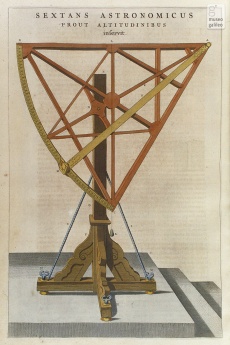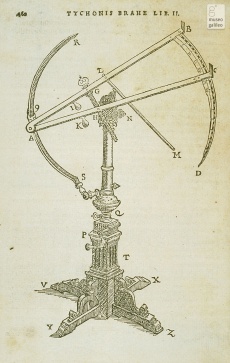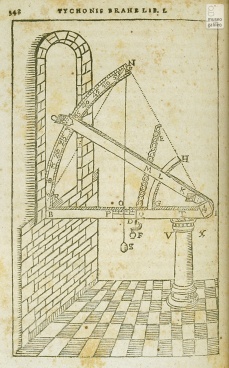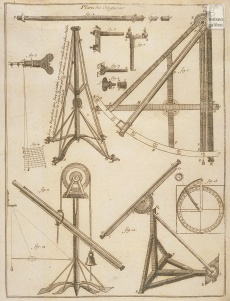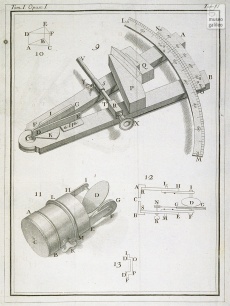Sextant
From Inventions
Contents |
Description
The sextant (sixth part of a circle) is an instrument primarily used in navigation for measuring the altitude of the Sun or a celestial body above the horizon at sea. From the Sun's altitude at its passage on the meridian, the user could compute the latitude of the observation point by means of numerical tables. The main parts of the sextant are a finder telescope and a 60° graduated sector with a pivoting arm. Holding the instrument vertical, the user aimed the telescope at the horizon. The index arm, fitted with a mirror, was then rotated until the Sun's image overlapped the horizon. The altitude was shown on the graduated scale. The instrument typically comes with several absorption filters to be inserted in the path of the Sun's rays. The sextant is also used in aerial navigation; in that case, the natural horizon line, often hard to distinguish, is replaced by an artificial horizon (the horizontal profile of a liquid). On land, the sextant can be used to measure the angle between the direction in which the telescope is aimed and the direction selected by means of the mirror on the rotating arm.
Existing Instruments
- Museo Galileo, Institute and Museum of the History of Science, Florence
Florence, Museo Galileo. Institute and Museum of the History of Science, inv. 3723.
- Musée des arts et métiers, Paris
Paris, Musée des arts et metiers, inv. 11547-0001-001-
Paris, Musée des arts et metiers, inv. 01841-0001-
- The Science Museum, London
The Science museum, inv. 1932-584
The Science museum, inv. 1938-260
The Science museum, "Mark V RAE aeronautical bubble-sextant, 1926-1939"
The Science museum, "Captain Cook's sextant, c 1772"
The Science museum, inv. 1932-584
The Science museum, inv. 1931-95
- Museum of the History of Science, Oxford
Museum of the History of Science, Oxford, inv. 45880
Museum of the History of Science, Oxford, inv. 45297
Museum of the History of Science, Oxford, inv. 38636
Museum of the History of Science, Oxford, inv. 34819
Museum of the History of Science, Oxford, inv. 35168
Museum of the History of Science, Oxford, inv. 89081
Museum of the History of Science, Oxford, inv. 36227
Museum of the History of Science, Oxford, inv. 41561
Museum of the History of Science, Oxford, inv. 47917
Museum of the History of Science, Oxford, inv. 45202
Museum of the History of Science, Oxford, inv. 33388
Museum of the History of Science, Oxford, inv. 35300
Museum of the History of Science, Oxford, inv. 39651
Museum of the History of Science, Oxford, inv. 50963
Museum of the History of Science, Oxford, inv. 33415
Museum of the History of Science, Oxford, inv. 37495
- Department of History of Science, Harvard University
Department of History of Science, Harvard University, inv. 5315
Department of History of Science, Harvard University, inv. 5252
- Museum of Scientific Instruments, University of Toronto
Museum of Scientific Instruments, University of Toronto, inv. ast72
Museum of Scientific Instruments, University of Toronto, inv. ast74
Links (External)
http://catalogo.museogalileo.it/approfondimento/Sestante.html (Italian)
http://www.nautica.it/info/tecnica/sestante/ (Italian)
http://www.vialattea.net/eratostene/contributi/nfesta/index.html (Italian)
http://www.afyacht.com/sestante.asp (Italian)
http://www.tecepe.com.br/nav/CDSextantProject.htm (English)
http://www.mat.uc.pt/~helios/Mestre/Novemb00/H61iflan.htm (English)
http://solarscience.msfc.nasa.gov/suntime/sxtnt_tchr.pdf (English)
http://subaru2.univ-lemans.fr/enseignements/physique/02/optigeo/sextant.html (French)
http://www.infovisual.info/05/076_fr.html (French)
http://galileo.cyberscol.qc.ca/Optique/chap2html/sextutil.html (French)
http://dailymotion.virgilio.it/video/xcd989_le-sextant_tech#from=embed (Video explaining how to make a sextant in French)
